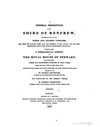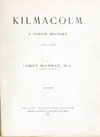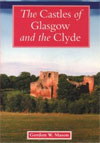

Ordnance Survey, 1864
Porterfield was an early seat of the Porterfield family, however no trace of it now remains.
The Porterfields descended from the de Porter family, the earliest mention of whom in Scotland comes with John de Porter witnessing the donation of the Kirk of Dundonald by Alexander, High Steward of Scotland, in 1262 to the monks of Paisley Abbey. In 1362 Stephen de Porter was granted a charter of the lands of Porterfield by Robert, High Steward of Scotland (later Robert II).
Stephen was probably responsible for building a castle at Porterfield, although little is known about it. It stood on the east bank of the White Cart.
Porterfield continued to serve as the family seat and by 1460 they were describing themselves as Porterfield of Porterfield. When Alexander Porterfield died without an heir Porterfield passed to his brother John. Four years later John bought Duchal Castle from John Lyle, 3rd Lord Lyle, which seemingly became the family’s main focus at the expense of Porterfield which was used as a dower house.
Following the death of John Porterfield in 1575 his second wife, Jean Knox of Ranfurly, retired to Porterfield. It was still considered significant enough to be included on Pont’s map of Renfrewshire, published some time between 1583 and 1596, Robert Gordon’s map, published some time between 1636 and 1652, and in Joan Blaeu’s Atlas, published in 1654.
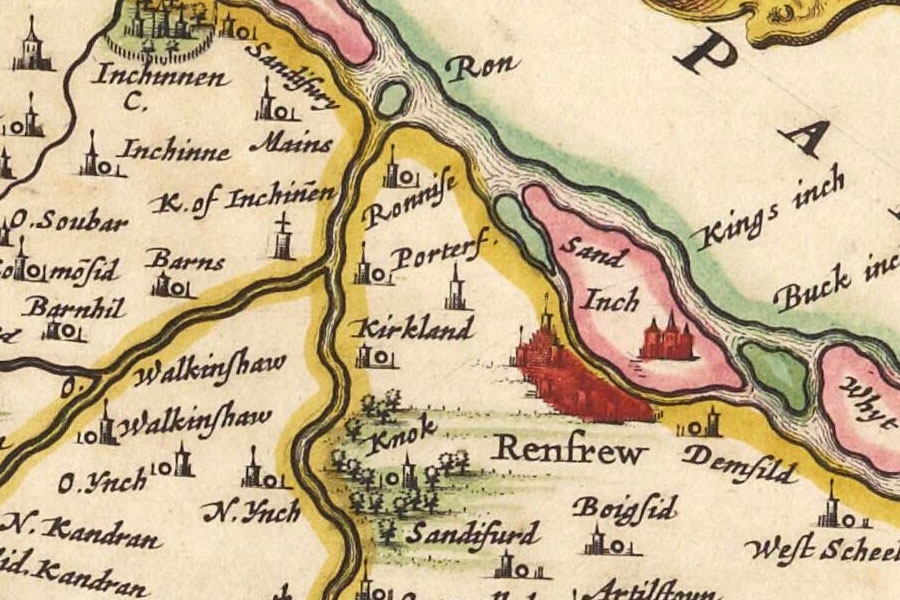
Joan Blaeu, 1654
In 1710 Alexander Porterfield, the grandson of John and Jean, built Duchal House which became the main seat of the Porterfield family until the line died out upon the death without an heir of a later Alexander Porterfield in 1815.
In the late 18th century Porterfield was described as a farm. The Ordnance Survey map of 1864 shows two L-shaped buildings with small gardens to the north-west, all surrounded by fields. Just 34 years later the OS map of 1898 shows that the Renfrew Forge and Steel Works had sprung up immediately to the south-west of Porterfield and the Albert Cabinet Works to the east. By the time of the OS map surveyed in 1910 and published in 1913 Porterfield has gone, replaced by a series of industrial buildings.
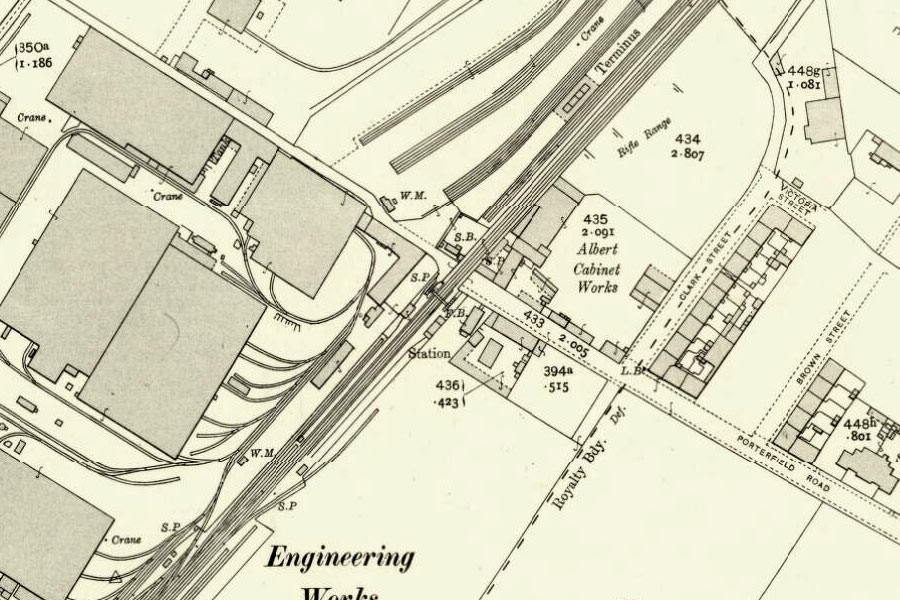
Ordnance Survey, 1913
Aerial photos taken between 1944 and 1950 show the entire site covered by warehouses. Today the site is occupied by an industrial estate and offices on Porterfield Road.



